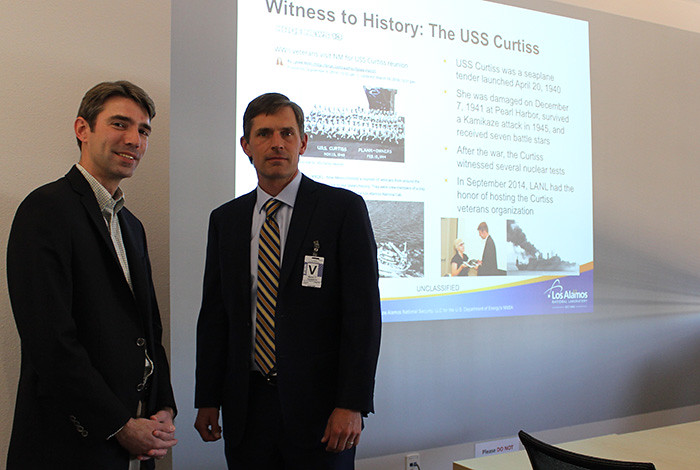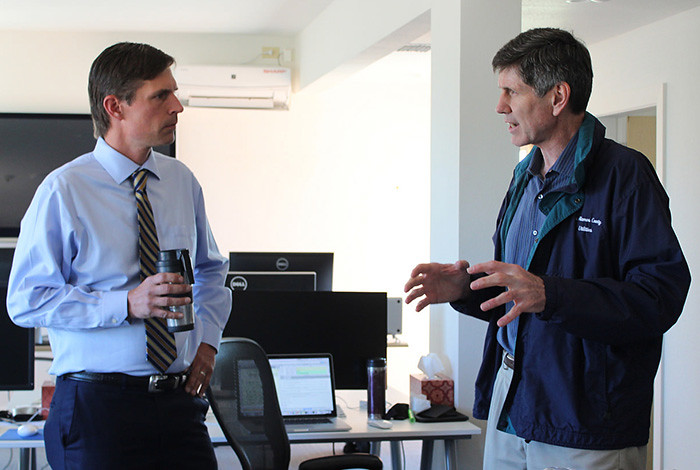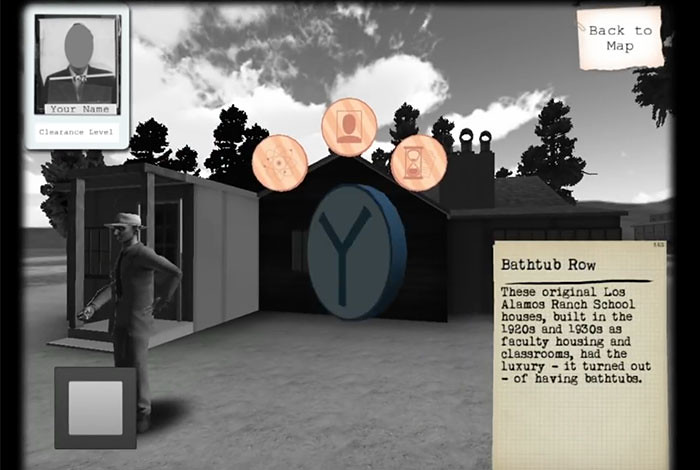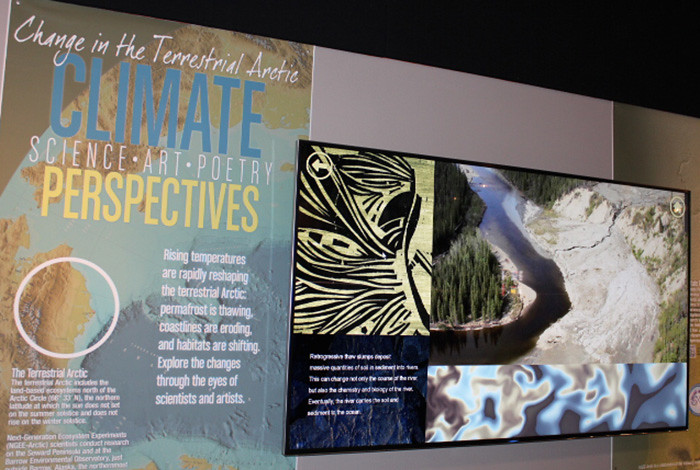In other news

U.S. Senator Martin Heinrich meets with Los Alamos National Laboratory Historian Alan Carr to discuss the laboratory’s contribution to nuclear testing from the Manhattan Project until the Limited Test Ban Treaty. Carr went into detail about the nuclear test over Eniwetok Atoll in the Marshall Islands, which Senator Heinrich’s father witnessed firsthand during his time in the U.S. Navy.
U.S. Senator visits Los Alamos
On May 5, U.S. Senator Martin Heinrich visited Los Alamos to support the transfer of technology between the Lab and local business. Heinrich toured Descartes Labs, which uses technology developed at Los Alamos using funding from the U.S. Department of Energy’s Laboratory Directed Research and Development (LDRD). Descartes uses satellite imagery to analyze and predict agriculture production, weather, and fire danger around the world.
Heinrich is an advocate of the LDRD program, which helps attract and retain top researchers to work at the Lab. He recently voted to pass the Energy Policy Modernization Act, a bipartisan energy package that included a provision supporting LDRD. “We can only have a strong Lab if the community around it is also strong,” he notes.
Prior to taking a tour of the Laboratory, Heinrich attended a presentation by Lab historian Alan Carr. Heinrich is particularly interested in Los Alamos history between 1943–1963 because his father served in the U.S. Navy and witnessed some of the nuclear testing in the Marshall Islands.

U.S. Senator Martin Heinrich tours the Los Alamos-based start-up tech company Descartes Labs with Los Alamos County Utilities Manager Tim Glasco.
Secret City app now available
Transport yourself back in time to the Manhattan Project via the Secret City app developed by the Laboratory’s Visible Team and the Bradbury Science Museum.
The free iPad app allows users “to view Los Alamos from anywhere in the world, almost like a computer game,” explains Laboratory historian Ellen McGehee. “You get off the train at Lamy, New Mexico; you meet Los Alamos’s ‘gatekeeper’ Dorothy McKibbin at 109 East Palace Avenue in Santa Fe; you go up ‘the Hill’ to the Laboratory; as you go through town, sites in the wartime technical areas are unlocked.”
Users of the app will see many of the Laboratory’s original buildings that are in the new Manhattan Project National Historical Park (MPNHP) but not yet ready for public admission. To download the app, visit the App Store.

Users of the new Secret City app can experience the environment that brought a group of scientists together to develop a weapon unlike any other in human history—a weapon to harness the power of the atom.
New climate change exhibit
A new exhibit at the Bradbury Science Museum allows users to explore climate change in an easy-to-digest manner. Climate Perspectives: Change in the Terrestrial Arctic opened May 25 and is a hands-on, user-driven exhibit chock full of Lab research about the changing Arctic landscape.
The science in this exhibit is accompanied by artistic interpretations—images, poems, etc.—of climate change. The extensive number of items contained in the exhibit’s database means an almost completely personalized journey as users decide what they want to interact with next.

Visitors to the Bradbury Science Museum use a touchscreen to control images on a larger screen (pictured), thus navigating their way through the new Climate Perspectives exhibit.






